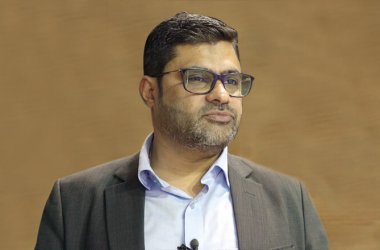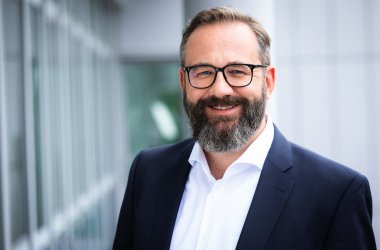 “2012 will see the emergence of efficient IT, not only as a bona fide market segment but also as an emerging trend. The trillions of dollars that are spent on IT each year are a millstone around the neck of every IT department in the world. CIOs realise that they need to reduce the amount of IT dollars spent on maintenance in addition to hardware and software energy consumption,” says Craig Symons, the principal analyst at Forrester Research.
“2012 will see the emergence of efficient IT, not only as a bona fide market segment but also as an emerging trend. The trillions of dollars that are spent on IT each year are a millstone around the neck of every IT department in the world. CIOs realise that they need to reduce the amount of IT dollars spent on maintenance in addition to hardware and software energy consumption,” says Craig Symons, the principal analyst at Forrester Research.
In the 2012 IT Budget Planning Guide for CIOs, Symons believes that the focus has shifted from green IT to efficient IT, with investments in solutions that actually measure, report and save energy, CO2 consumption and associated costs.
“The IT market has reached a level of maturity that means it is no longer possible to market a solution as a green IT solution when it isn’t really a green IT solution without being pretty quickly found out. There is a distinct difference between solutions that actually save energy and those that say they do, thanks to the accuracy of the reporting tools available today,” he wrote.
Organisations today have realised not just the extent of their reliance on energy and critical natural resources but also the build up of costs associated with the deployment and maintenance of IT infrastructures. At the same time, consumers, government bodies and large media agencies are together steering organisations towards the ‘greener’ side of the spectrum.
“In the west it has been the widespread introduction of legislation and the understanding that business must have a corporate social responsibility. More recently vendors have understood that many of the critical rare earth materials that they require for products have a limited supply stream and that they must become more efficient in managing the use of these resources. The work of organisations such as CNN in addition to internationally recognised environmental agencies like Greenpeace to draw the world’s attention to the the serious consequences of increasing carbon emissions and lack of e-waste management practices has played a major role in increasing the pressure on organisations to follow sustainable practices. As a result, both individuals and enterprises today understand that their choices really could be hampering the future of the planet,” says Philip Hughes, CEO at Akhdar FZCO, a green integrated solutions provider that is spearheading the adoption of global environmental solutions and initiatives across the Middle East.
John Ross, GM at Oki Middle East, India and Africa agrees: “People all over the world are becoming increasingly conscious of our responsibility as human beings towards the environment. This “green movement” may have started small, but it’s grown to become an inherent part of the way we live our everyday lives. More and more organisations are adopting green practices because they realise that they too, as influencers, should make a conscious effort to incorporate green ethics into corporate culture and inevitably reduce their carbon footprint. Moreover, Organisations are realising that investing in green IT yields benefits not only for the environment, but also in terms of energy saving and cost cutting.”
A few years ago, Oki issued a report which showed how UAE businesses are spending millions of dirhams per year on avoidable energy costs, and that is just in terms of unnecessary printing costs. “If these organisations were to consider using energy compliant office products, they would not only be reducing their carbon footprint, they’d also be saving a significant amount of money. It’s a win-win situation,” Ross says.
Talk or walk?
While the importance and impact of ‘green’ IT cannot be denied, the question arises, how many organisations really believe in ‘sustainable’ IT and how many treat it as mere marketing ‘jargon’?
Experts believe that increasing pressures from legislative bodies and the need to achieve compliance certifications are driving organisations towards taking these initiatives seriously.
“Perhaps in the past buzz-phrases like sustainable business practices were thrown around a bit too casually, but I do sincerely believe that there is now an incredible determination from companies here in the Middle East to be part of positive change for the global environment. It’s no longer just talking about green programs, but committing to long term plans and making adjustments, even if they are small, to benefit the environment,” says Ernest Azzam, Laser and Enterprise Solutions business manager for HP Middle East.
Hughes believes otherwise. “Most of it is propaganda. The issue is that to be TRULY green, you have to view your entire IT “holistically”. A vendor will only be pushing one part of the solution, the IT department will then fight with accounts department for the funding and often the capital cost of a green solution will be ignored to “save”. The issue for an organisation is that they must be green at every level and must get full executive sponsorship to include facilities management, HR, marketing and of course finance,” he states.
Dan Smith, head of integrated marketing for the Middle East and Africa region of Xerox’s Developing Markets Operations (DMO), says that in the current environment any marketing message needs to be valid and backed up by evidence due to increasing consumer awareness. “Organisations have wider responsibilities to their communities and this is both as consumers and producers. Sustainability is something that is recognised and understood and increasingly will affect buying behaviour – especially in younger generations,” says Smith.
Industry stakeholders believe that the Middle East much like the rest of the world is beginning to witness a significant increase in sustainable practices driven by the direction of governments.
Hughes says, “Green IT messaging has been a major part of vendor’s marketing briefs in the Middle East region for more than 10 years now. Much of that has focused on efficiency – of usage, or of energy. This trend then met the change in the economic situation so users began to pay much more attention to issues such as their costs of ownership. The change here has been led by regional offices of multi-national corporations requiring compliant and green solutions. The past year or so has seen that being taken on board by the local corporations who operate globally such as the telecommunication providers. We are also seeing specific green clauses appearing in tenders for government departments. The IT industry now must take this issue seriously, demand is changing and legislation is coming.”
“There is an increasing need to successfully and easily lower the carbon footprint in the IT world, and the Middle East is becoming more aware of this with each passing day. In most cases reducing costs that affect a company’s bottom line is what is driving organisations towards going green. The UAE is particularly backing new initiatives to minimise negative environmental impacts; the country plans to be the first in the Middle East, and one of the first in the world to implement and enforce green codes of practice and regulation. Abu Dhabi’s Masdar City is perhaps the brightest example of this. The city is essentially a long term investment by the authorities into a more sustainable future, which align with Abu Dhabi’s leadership plans in its 2030 Vision,” says Khwaja Saifuddin, senior director of sales, MEA at Western Digital (WD).
George DeBono, GM, MEA at Red Hat, believes that there is still some way to go. “The trend in the Middle East is still lagging a bit. In reality, some organisations are more aware and serious as compared to others. Green IT is on some of the lists we do receive in terms of needs; however it is generally not in the top five or six needs that are documented or expressed to us. The top needs are typically focused on delivering what their business needs as the primary requirement to be addressed,” he says.
The value chain
So where does the adoption of green IT truly begin?
“Sustainable ICT is a complete ecosystem that requires each and every element to be on board with the movement towards sustainability or Green IT. This means that every single employee, every piece of hardware and software must be in-tune with the sustainable ICT objective or its effectiveness will be reduced, or will fail complete,” says Saifuddin.
Xerox’ Smith adds, “Sustainability begins even further back along the value chain with the recognition that this is an imperative, not a luxury. Organisations reactions to the science and discussion in communities will lead them to recognise their stakeholders and employees as individuals and corporate citizens, which in turn will affect their strategies.”
“We, together with our partners, take sustainability and green ICT solutions very seriously. It’s definitely not just a marketing propaganda, but also has to be fulfilled in our daily life and business operation,” says Green Lin, NB channel marketing, Micro- Star International (MSI).
According to Lin, in keeping with its objective the company continuously monitors business activities to ensure they meet environment, safety and health regulations, in addition to using products and packaging materials based on green concepts. MSI stresses the need to reduce the emission of pollutants, the consumption of natural and energy resources, and to minimise the safety and health risk by continual improvement of manufacturing process, working environment and equipment used. Most importantly, it empowers operational management and invests in personnel training to achieve these ends.
“We share ‘Green Policy’ with partners and clearly communicate the details of product design and packaging and finally build a consensus with channel partners that by using green IT and sustainable products, consumers can not only help save the environment, but also save their money,” says Lin.
RedHat’s DeBono says, “Our channel partners receive intensive technical training which covers the ‘green’ aspects of our technology. They understand that our operating system, Red Hat Enterprise Linux (RHEL), is the most energy efficient one currently available in the market and use its credentials as tested by independent bodies in their sales pitch to impress customers.”
Value added distributor, Spectrami, has adopted cloud based solutions, thus reducing dedicated infrastructure requirement. “We use energy efficient endpoints and in our own way are making a conscious effort to promote the same amongst our partners through constant interaction and education,” says Anand Choudha, MD, Spectrami.
HP has established and promoted a number of leading initiatives such as the HP Planet Partners Program, “a social responsibility programme where owners of HP toner cartridges can send their used products to official HP recycling facilities, where spent cartridges are recycled and repurposed, saving plastic from junk yards and in the process lessening the impact on the environment. The programme has been very successful here in the UAE, having been implemented into local companies as well as educational institutions throughout the country, the feedback we have received from people involved are strong shows of support for the program” says Azzam.
In addition, the company has continued to create solutions such as their Auto-on/Auto-off technology that switches off the printer or multi-function device completely instead of putting it in stand-by mode to reduce energy consumption by up to 63%. “We have also created the Secure print solution that allows the printing of the job only when the user is at the printer to cut back on wastage as a lot of users don’t pick up their printed documents from the printer which then goes to waste” he says.
“We also provide our partners the tools to educate their customers on the workflows and available technologies to help maintain sustainable ICT. These recommendations can be as simple as setting double-sided printing as default on the printer, that cuts immediately paper consumption by up to 50% and as advanced as detailed workflow management and energy consumption tools to monitor their fleet of devices,” Azzam adds.
Some vendors do walk the talk and case in point is Brocade. Khaled Kamel, territory channel manager, MEA at Brocade, says, “In March of 2008 Brocade had a vision to build a world class campus. The goal of the project was to provide the business with flexibility in order to satisfy growth for both its employee population and the labs used for research and development of its products. The design solution focused on flexible scalability, energy efficiency, and sustainability. The results were nothing short of extraordinary with the 562,000 square foot San Jose Headquarters campus being awarded the LEED Commercial Interiors Gold Certification established by the U.S. Green Building Council (USGBC) and verified by the Green Building Certification Institute. In addition, through virtualisation, decommissioning and re-racking, the campus consolidated three data centres into one and five R&D engineering labs into one. As a result of which, the data centre is projected to achieve a power usage effectiveness (PUE) of less than 1.2, saving more than 14 million kilowatt-hours each year. The data centre project is the single largest “Data Centre Project” incentive ever awarded by Pacific Gas and Electric (PG&E) which was evidenced by a rebate of $2.5 Million under PG&E’s Non-Residential New Construction Program.”
According to Kamel, Brocade is taking steps to help improve energy efficiencies by focusing on products and programs that support the development of green data centres. “We are committed to doing our part to provide our customers with high performance, low energy, data management solutions, and we are joining with industry partners like SNIA to drive standards for green data centres,” he adds.
Akhdar FZCO is launching the first fully compliant industry approved facility in the Middle East for the recycling of electrical and electronic appliances. “We have a wide range of processes and solutions that we are bringing into this region as fast as we can, whilst working with the local authorities. Everything we are doing in this field is “new”. It has taken us four years to reach this point and from early August, this year you will witness dramatic change in the “Green IT” landscape in the region,” says Hughes.
“We have been training our partners and building our channel. We will be implementing a reverse logistics channel to extend regional coverage and will work with master outsource partners in different locations and market verticals to take this vision further. It takes time and vision to have got to this point, the last pieces of the jigsaw puzzle will fall in place when we fully launch the project next month,” he states.
Sustainable future
Azzam believes that the Middle East and the UAE in particularly are making remarkable strides in their effort to promote the adoption of green practices with initiatives such as Masdar City. “If anything could be improved in order to improve environmental conditions at a faster rate, it would be to create more awareness of eco-friendliness at lower levels, targeting employees at every company and showing them how their actions would help everyone. I believe it’s not a matter of willpower, but awareness, people want to get involved, some just don’t know how; and that’s what we’re all working to solve,” he says.
Jai Shankar, marketing manager at Brother Gulf believes that there needs to be more alignment between manufacturers and government bodies to encourage the use of bio degradable materials in product design and packaging. “Most importantly, governments need to create and enforce stricter legislations surrounding the subject of sustainable practices by enforcing penalties to ensure people take the subject seriously. This alone can contribute significantly and lead to an instrumental shift from green ‘concepts’ to green ‘reality’” he says.
Kamel believes that education at a school and university level is essential to develop a ‘sustainable mindset’ and private organisations and government must work with these institutions to develop ‘green’ curriculum to promote a better understanding of how these concepts can be applied in real life.
MSI’s Lin says, “Governments should support companies who provide sustainable and green IT solutions while the media should continue their efforts in bringing to light global environmental issues and how to tackle them. Suppliers should then be working towards emphasising the importance of investing in eco-design during the R&D and design phases of a product.”
“The will always be naysayers who dismiss going green as an option rather than a necessity. The arguments made against green technology and products will range from green products being more expensive than standard products to a perceived lack of payback, where decision makers will overlook the fact that the technology generally shows returns only in the long term, rather than immediately. Organisations must remember that it isn’t just about purchasing green solutions but more about integrating these solutions into the environment. The staff of an organisation should have to embark on a thorough training programme to make sure they are using the new products or technology effectively. There should also be audits down the line to study the effect of the new technology on the organisation and, if the results are disappointing, the process should be reviewed to see how the organisation can actually benefit from its new investments,” says Saifuddin.
With so much done and much more to look forward to, we believe the world is only at the beginning of its green journey. With more consensus on the subject between governments and end users, organisations will no doubt be driven into exploring the best ways to implement and integrate green technologies within their existing environments. A situation that will only get better as these organisations with active green IT environments begin witnessing significant cost and energy efficiencies in their operations. The story for green IT is as exciting as it is challenging, how far we are from witnessing true success stories only time will tell. //





